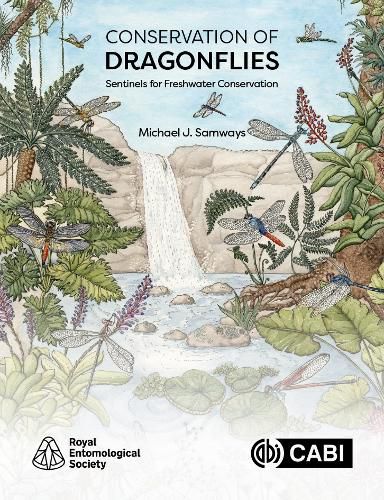Readings Newsletter
Become a Readings Member to make your shopping experience even easier.
Sign in or sign up for free!
You’re not far away from qualifying for FREE standard shipping within Australia
You’ve qualified for FREE standard shipping within Australia
The cart is loading…






Dragonflies are among the most familiar and popular of all insects, deeply embedded in human cultural history. They are iconic and tell us much about the environments in which we and they live. Their conservation is an important part of biodiversity conservation. One modern dragonfly species is listed as extinct, with many others currently threatened. It is now essential to increase conservation efforts towards saving these threatened species, with strategies now available for doing this. Recovery of dragonfly populations goes hand in hand with improvements to both freshwater conditions and bank vegetation quality. In contrast, some other dragonfly species have benefitted greatly from human transformation of the landscape, with artificial ponds in particular, increasing the population levels of many species. In turn, climate change is seeing many geographical range shifts. Dragonflies are variously sensitive to the health of freshwater systems, and the quality of vegetation along rivers and around ponds. Dragonflies are excellent indicators in these times of great concern over the quality of our freshwater supplies. Their wide range of sensitivities enables us to measure the extent to which freshwater ecosystems are either deteriorating or are improving when we undertake restoration. They enable us to gauge how well we are conserving freshwaters, whether ponds and lakes, streams or rivers. They are also good umbrellas for many other freshwater inhabitants, which altogether reflect the health of a freshwater system. Conservation of Dragonflies: Sentinels for Freshwater Conservation is for naturalists, citizen scientists, entomologists and conservation scientists, as well as practitioners and policy makers around the world.
$9.00 standard shipping within Australia
FREE standard shipping within Australia for orders over $100.00
Express & International shipping calculated at checkout
Dragonflies are among the most familiar and popular of all insects, deeply embedded in human cultural history. They are iconic and tell us much about the environments in which we and they live. Their conservation is an important part of biodiversity conservation. One modern dragonfly species is listed as extinct, with many others currently threatened. It is now essential to increase conservation efforts towards saving these threatened species, with strategies now available for doing this. Recovery of dragonfly populations goes hand in hand with improvements to both freshwater conditions and bank vegetation quality. In contrast, some other dragonfly species have benefitted greatly from human transformation of the landscape, with artificial ponds in particular, increasing the population levels of many species. In turn, climate change is seeing many geographical range shifts. Dragonflies are variously sensitive to the health of freshwater systems, and the quality of vegetation along rivers and around ponds. Dragonflies are excellent indicators in these times of great concern over the quality of our freshwater supplies. Their wide range of sensitivities enables us to measure the extent to which freshwater ecosystems are either deteriorating or are improving when we undertake restoration. They enable us to gauge how well we are conserving freshwaters, whether ponds and lakes, streams or rivers. They are also good umbrellas for many other freshwater inhabitants, which altogether reflect the health of a freshwater system. Conservation of Dragonflies: Sentinels for Freshwater Conservation is for naturalists, citizen scientists, entomologists and conservation scientists, as well as practitioners and policy makers around the world.